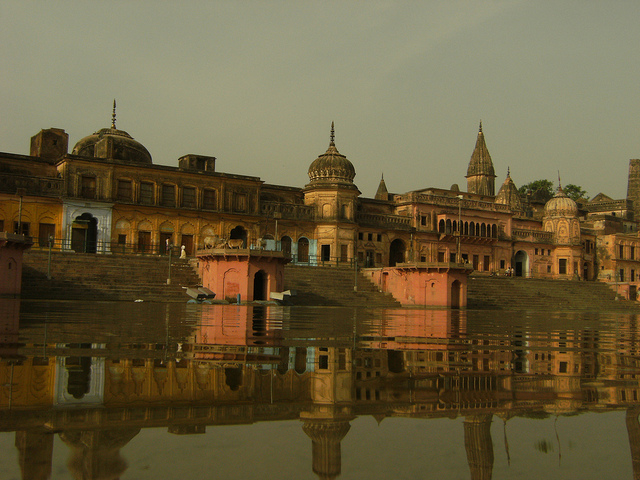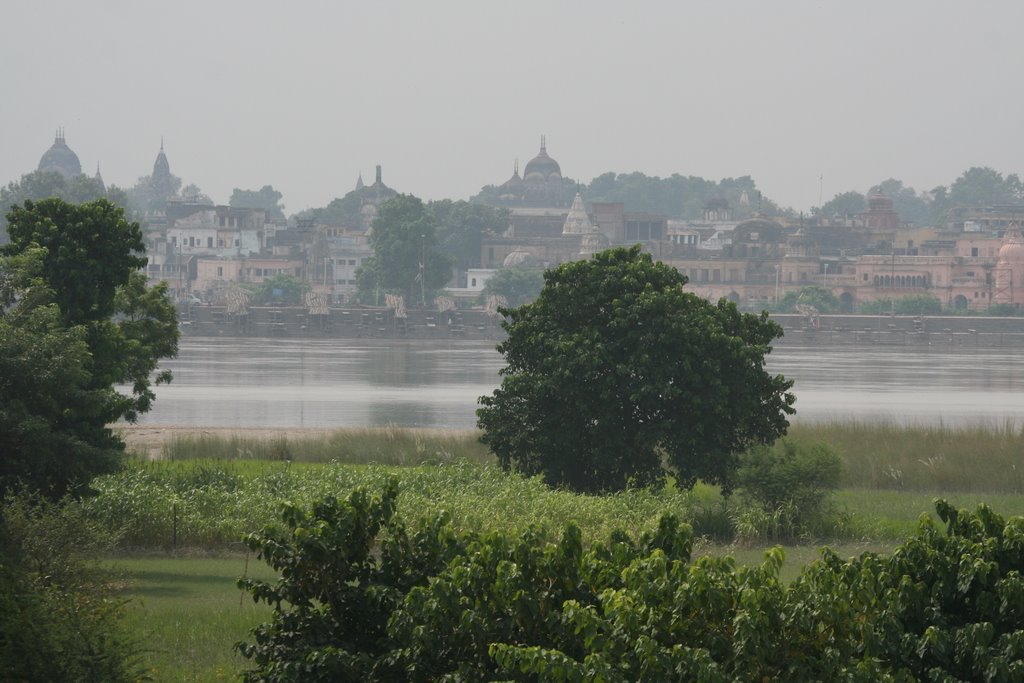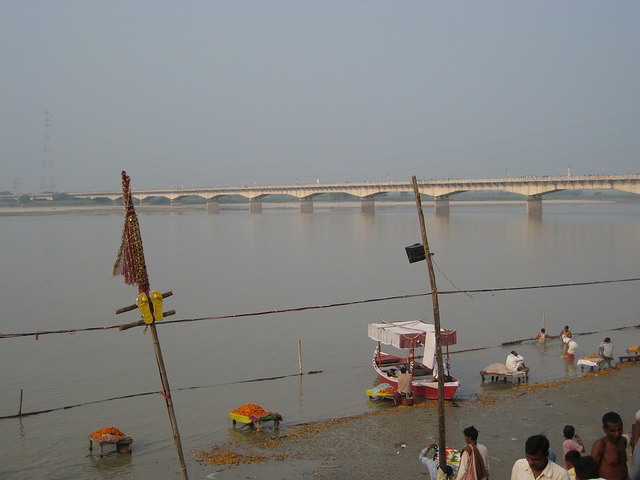Ayodhya, situated on the south bank of river Saryu, is described as the birth place of Hindu god Rama, and the capital of the ancient Kosala Kingdom (the old capital of Awadh). This Hindu holy city is described as early as in the Hindu Epics. The remnants of Buddhism, Hinduism, Islam and Jainism can also be found in Ayodhya. As per Hindu mythology, the city was known by the name of ‘KaushalDesh’ in ancient times.



Ayodhya city was the capital of the ancient kingdom of Ayodhya, where Lord Ram was born. It is also mentioned in Hindu mythology and the Ramayana. The ancient scripture of Atharvaveda describes Ayodhya as 'a city built by gods' and compares its prosperity with the glory and splendor of the paradise.
History of Ayodhya, Uttar Pradesh, India is a fascinating one. According to the ancient history, Ayodhya was one of the holiest cities where the religious faiths of Hinduism, Buddhism, Islam and Jainism united together to build a place of enormous sacred importance.
Ayodhya History is a chequered one. In the Atharvaveda, this place was described as a city that was made by gods and was as prosperous as heaven itself. The powerful kingdom of ancient Kosala had Ayodhya as its capital. This city was also a significant trade centre in 600 BC. Historians have identified this place to be Saketa, a key Buddhist centre during the 5th century BC (it is a widely held belief that Buddha visited Ayodhya on several occasions) which it remained till the 5th century AD. In fact, Fa-hien, the Chinese monk, kept record of several Buddhist monasteries that he saw here.
Ayodhya has a historical significance for the Jain community too. This is the birth place of two important Jain tirthankaras who were born in the early centuries AD. Jain texts also stand testimony to the visit of Mahavira, Jainism's founder to this city.
In the 7th century AD, Xuan Zhang (Hiuen Tsang), the Chinese monk, recorded spotting many Hindu temples in Ayodhya. In the epic Ramayana, the city of Ayodhya is cited as the birthplace of Lord Sri Rama, a Hindu deity who was worshipped as Lord Vishnu's seventh incarnation. Ayodhya became a famous pilgrimage destination in the 1400's when Ramananda, the Hindu mystic, established a devotional sect of Rama.
The 16th century witnessed a shift in power with Ayodhya coming under the rule of the Mughal Empire. Ayodhya was annexed in 1856 by the British rulers. Between 1857 and 1859, this place was one of the main centers where the sparks of the first war of Indian Independence originated. These sparks later led to a nationwide revolt of the Indian soldiers in opposition to the British East India Company that began in Calcutta.
Air: The nearest airport is at a distance of 140 km away from city heart and is at Lucknow. Lucknow airport is well connected by domestic flights to all major airports in India. Regular flights are available from Lucknow to Delhi. One can hire taxis from Lucknow to reach Ayodhya. Taxi charges about Rs 1,750.
Rail: Ayodhya railhead is well connected to the nearby railheads. Other option is Faizabad station, which is well connected to all major cities in India including New Delhi, Varanasi, Agra, Lucknow, and Mumbai.
Road: Uttar Pradesh State Road Transport Corporation buses connect Ayodhya with all other important towns in the state. Private deluxe buses are also available from important cities to Ayodhya.
The Bazaars in Ayodhya have their own charm with narrow winding lanes, rows of dimlit shops, vegetable markets, all under the same roof. The shops in the Bazaars in Ayodhya keep a good stock of souvenirs that makes for interesting gift packages back home. Photos of temples, shirts with religious prints, devotional objects, idols of Ram and Sita, key chains are some of the items available here. Shopping in Ayodhya is a fun filled experience and you could spend some quality times venturing the Bazaars in Ayodhya.
The shops in the Bazaars in Ayodhya keep a good stock of souvenirs that makes for interesting gift packages back home. Photos of temples, shirts with religious prints, devotional objects, idols of Ram and Sita, key chains are some of the items available here. Photos of temples, shirts with religious prints, devotional objects, idols of Ram and Sita, key chains are some of the items available here.
Stroll along leisurely in the many narrow laned markets in Ayodhya where a row of shops selling brassware, textiles, and zari products are showcased. These narrow lanes and Bazaars emit an old world charm which is characteristic of places like Mathura, Vrindavan, Agra and Ayodhya. . All these factors culminate to make your Shopping in Ayodhya worthwhile.
There are pretty decent and resonable accommodations available in Ayodhya. Being a religious centre Dharamshalas are available for pilgrims and tourists can opt for tourist lodges.
Dussehra of Ayodhya
The place is popular for mandali Ramlilas. The performance is dialogue - based and presented on a platform stage. High standard of performance is complemented by songs and kathak dances and eye catching décor.
